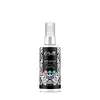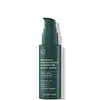What's inside
What's inside
 Key Ingredients
Key Ingredients

 Benefits
Benefits

 Concerns
Concerns

 Ingredients Side-by-side
Ingredients Side-by-side

Water
Skin ConditioningSqualane
EmollientSd Alcohol 40-B
AstringentAlpha-Arbutin
AntioxidantPropylene Glycol
HumectantKojic Acid
AntioxidantGlutathione
Azelaic Acid
BufferingEthoxydiglycol
HumectantGlycerin
HumectantCetyl Alcohol
EmollientDimethyl Isosorbide
SolventNiacinamide
SmoothingResveratrol
AntioxidantButylene Glycol
HumectantDipotassium Glycyrrhizate
HumectantGlyceryl Stearate
EmollientCaprylic/Capric Triglyceride
MaskingHydroxypinacolone Retinoate
Skin ConditioningAmmonium Acryloyldimethyltaurate/Vp Copolymer
Phenoxyethanol
PreservativeEthylhexylglycerin
Skin ConditioningWater, Squalane, Sd Alcohol 40-B, Alpha-Arbutin, Propylene Glycol, Kojic Acid, Glutathione, Azelaic Acid, Ethoxydiglycol, Glycerin, Cetyl Alcohol, Dimethyl Isosorbide, Niacinamide, Resveratrol, Butylene Glycol, Dipotassium Glycyrrhizate, Glyceryl Stearate, Caprylic/Capric Triglyceride, Hydroxypinacolone Retinoate, Ammonium Acryloyldimethyltaurate/Vp Copolymer, Phenoxyethanol, Ethylhexylglycerin
Water
Skin ConditioningMandelic Acid
AntimicrobialGlycerin
HumectantButylene Glycol
HumectantNiacinamide
SmoothingPolysorbate 20
EmulsifyingLactic Acid
BufferingRosa Canina Fruit Oil
EmollientCalophyllum Inophyllum Seed Oil
AntimicrobialSalicylic Acid
MaskingSuperoxide Dismutase
AntioxidantBakuchiol
AntimicrobialSodium Hyaluronate
HumectantRumex Occidentalis Extract
Skin ConditioningAscophyllum Nodosum Extract
Skin ConditioningNonapeptide-1
Skin ConditioningPalmitoyl Tripeptide-5
Skin ConditioningAcetyl Tetrapeptide-40
Skin ConditioningPterocarpus Marsupium Bark Extract
Glutamic Acid
HumectantPhenyl T-Butylnitrone
AntioxidantResveratrol Dimethyl Ether
AntioxidantCamellia Sinensis Leaf Extract
AntimicrobialPanthenol
Skin ConditioningTocopheryl Acetate
AntioxidantAscorbic Acid
AntioxidantTocopherol
AntioxidantCaprylic/Capric Triglyceride
MaskingXanthan Gum
EmulsifyingSclerotium Gum
Emulsion StabilisingEthylhexylglycerin
Skin ConditioningCaprylyl Glycol
EmollientSorbitol
HumectantDextran
Sodium Gluconate
Skin ConditioningDisodium Succinate
MaskingAcetyl Tributyl Citrate
MaskingO-Cymen-5-Ol
AntimicrobialSodium Hydroxide
BufferingPhenoxyethanol
PreservativeWater, Mandelic Acid, Glycerin, Butylene Glycol, Niacinamide, Polysorbate 20, Lactic Acid, Rosa Canina Fruit Oil, Calophyllum Inophyllum Seed Oil, Salicylic Acid, Superoxide Dismutase, Bakuchiol, Sodium Hyaluronate, Rumex Occidentalis Extract, Ascophyllum Nodosum Extract, Nonapeptide-1, Palmitoyl Tripeptide-5, Acetyl Tetrapeptide-40, Pterocarpus Marsupium Bark Extract, Glutamic Acid, Phenyl T-Butylnitrone, Resveratrol Dimethyl Ether, Camellia Sinensis Leaf Extract, Panthenol, Tocopheryl Acetate, Ascorbic Acid, Tocopherol, Caprylic/Capric Triglyceride, Xanthan Gum, Sclerotium Gum, Ethylhexylglycerin, Caprylyl Glycol, Sorbitol, Dextran, Sodium Gluconate, Disodium Succinate, Acetyl Tributyl Citrate, O-Cymen-5-Ol, Sodium Hydroxide, Phenoxyethanol
 Reviews
Reviews

Ingredients Explained
These ingredients are found in both products.
Ingredients higher up in an ingredient list are typically present in a larger amount.
Butylene Glycol (or BG) is used within cosmetic products for a few different reasons:
Overall, Butylene Glycol is a safe and well-rounded ingredient that works well with other ingredients.
Though this ingredient works well with most skin types, some people with sensitive skin may experience a reaction such as allergic rashes, closed comedones, or itchiness.
Learn more about Butylene GlycolThis ingredient is an emollient, solvent, and texture enhancer. It is considered a skin-softener by helping the skin prevent moisture loss.
It helps thicken a product's formula and makes it easier to spread by dissolving clumping compounds.
Caprylic Triglyceride is made by combining glycerin with coconut oil, forming a clear liquid.
While there is an assumption Caprylic Triglyceride can clog pores due to it being derived from coconut oil, there is no research supporting this.
Learn more about Caprylic/Capric TriglycerideEthylhexylglycerin (we can't pronounce this either) is commonly used as a preservative and skin softener. It is derived from glyceryl.
You might see Ethylhexylglycerin often paired with other preservatives such as phenoxyethanol. Ethylhexylglycerin has been found to increase the effectiveness of these other preservatives.
Glycerin is already naturally found in your skin. It helps moisturize and protect your skin.
A study from 2016 found glycerin to be more effective as a humectant than AHAs and hyaluronic acid.
As a humectant, it helps the skin stay hydrated by pulling moisture to your skin. The low molecular weight of glycerin allows it to pull moisture into the deeper layers of your skin.
Hydrated skin improves your skin barrier; Your skin barrier helps protect against irritants and bacteria.
Glycerin has also been found to have antimicrobial and antiviral properties. Due to these properties, glycerin is often used in wound and burn treatments.
In cosmetics, glycerin is usually derived from plants such as soybean or palm. However, it can also be sourced from animals, such as tallow or animal fat.
This ingredient is organic, colorless, odorless, and non-toxic.
Glycerin is the name for this ingredient in American English. British English uses Glycerol/Glycerine.
Learn more about GlycerinNiacinamide is a multitasking form of vitamin B3 that strengthens the skin barrier, reduces pores and dark spots, regulates oil, and improves signs of aging.
And the best part? It's gentle and well-tolerated by most skin types, including sensitive and reactive skin.
You might have heard of "niacin flush", or the reddening of skin that causes itchiness. Niacinamide has not been found to cause this.
In very rare cases, some individuals may not be able to tolerate niacinamide at all or experience an allergic reaction to it.
If you are experiencing flaking, irritation, and dryness with this ingredient, be sure to double check all your products as this ingredient can be found in all categories of skincare.
When incorporating niacinamide into your routine, look out for concentration amounts. Typically, 5% niacinamide provides benefits such as fading dark spots. However, if you have sensitive skin, it is better to begin with a smaller concentration.
When you apply niacinamide to your skin, your body converts it into nicotinamide adenine dinucleotide (NAD). NAD is an essential coenzyme that is already found in your cells as "fuel" and powers countless biological processes.
In your skin, NAD helps repair cell damage, produce new healthy cells, support collagen production, strengthen the skin barrier, and fight environmental stressors (like UV and pollution).
Our natural NAD levels start to decline with age, leading to slower skin repair, visible aging, and a weaker skin barrier. By providing your skin niacinamide, you're recharging your skin's NAD levels. This leads to stronger, healthier, and younger looking skin.
Another name for vitamin B3 is nicotinamide. This vitamin is water-soluble and our bodies don't store it. We obtain Vitamin B3 from either food or skincare. Meat, fish, wheat, yeast, and leafy greens contain vitamin B3.
The type of niacinamide used in skincare is synthetically created.
Learn more about NiacinamidePhenoxyethanol is a preservative that has germicide, antimicrobial, and aromatic properties. Studies show that phenoxyethanol can prevent microbial growth. By itself, it has a scent that is similar to that of a rose.
It's often used in formulations along with Caprylyl Glycol to preserve the shelf life of products.
Water. It's the most common cosmetic ingredient of all. You'll usually see it at the top of ingredient lists, meaning that it makes up the largest part of the product.
So why is it so popular? Water most often acts as a solvent - this means that it helps dissolve other ingredients into the formulation.
You'll also recognize water as that liquid we all need to stay alive. If you see this, drink a glass of water. Stay hydrated!
Learn more about Water